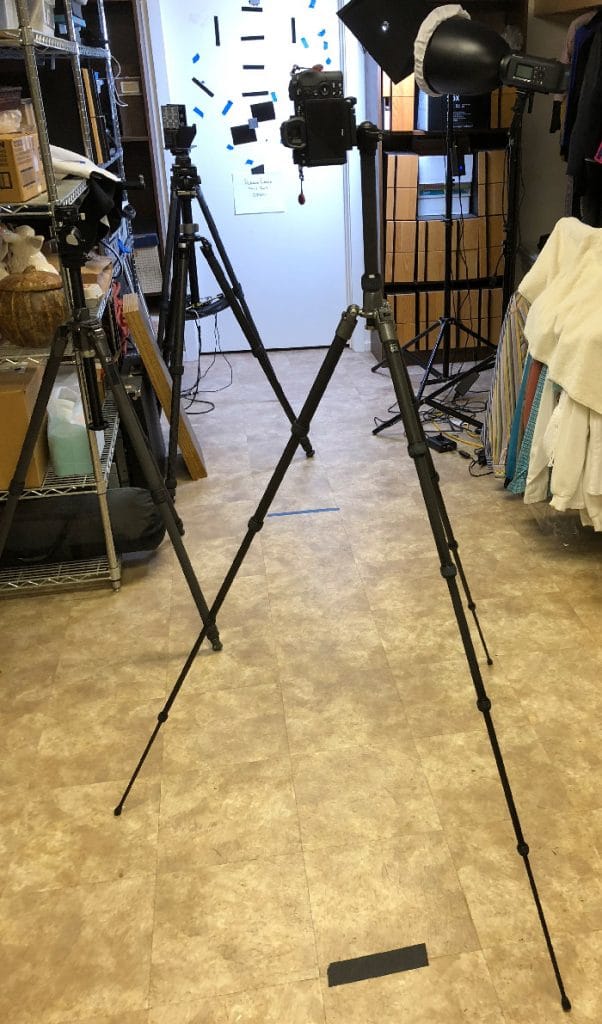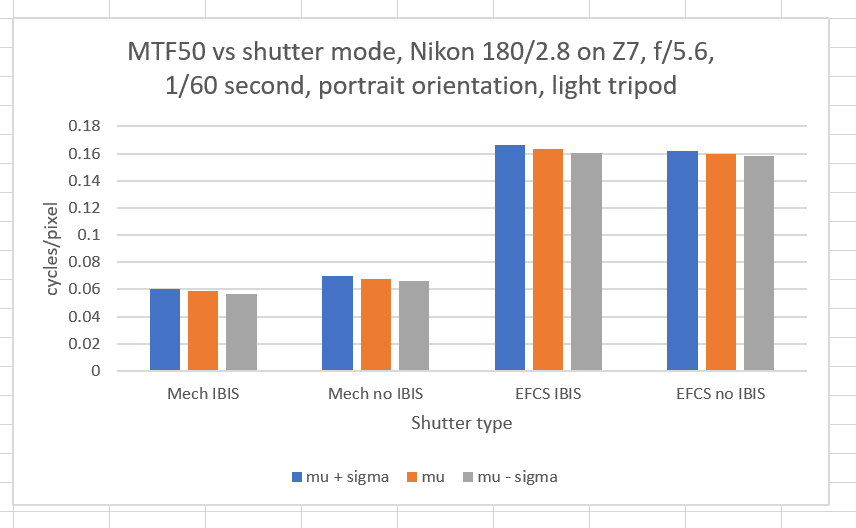This is one in a series of posts on the Nikon Z7. You should be able to find all the posts about that camera in the Category List on the right sidebar, below the Articles widget. There’s a drop-down menu there that you can use to get to all the posts in this series; just look for “Nikon Z6/7”.
Yesterday, I posted about how the mechanical shutter of the Z7 can cause blur in images. I’ve been asked if IBIS can help with that.
I used the same test setup, but with a Nikon 180 mm f/2.8 lens rather than the CV 125/2.5 Apo-Lanthar, since I can’t get IBIS to work with the Cosina lens.
I focused and made 32 exposures 3 seconds apart using the built-in intervalometer with the mechanical shutter with IBIS on and off, and with the electronic shutter (ES) with IBIS set both ways. I developed the images in dcraw and computed the MTF50 values in cycles per pixel. Then I computed the average and standard deviation for all three shutter modes. Here are the averages (aka mu values), and the average plus one standard deviation (mu + sigma) and the average minus one standard deviation (mu – sigma) values.
The caption is again wrong. The shutter speed was 1/50. The mechanical shutter case is made slightly worse by turning IBIS on, and the electronic shutter is slightly better with IBIS on.
It looks like Nikon has done a good job with their IBIS design in that putting the camera on a tripod doesn’t cause IBIS to make things worse by shaking the camera, but that the IBIS is not designed to cope with the high-frequency vibrations caused by mechanical shutter shock.
Incidentally, it looks like the Nikon 180/2.8 is not as sharp as the CV 125/2.5. No surprise there.


Leave a Reply